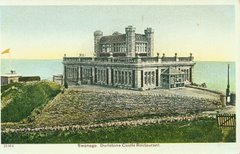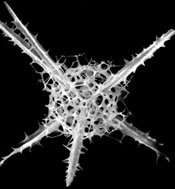Abigail and I have spent much time discussing how the plankton that lived in the Jurassic and Cretaceous of Dorset changed through time as part of our conversations on the dynamic nature of the landscape, the geology, and the organisms recorded in the rocks. The species found change in two main ways. First, there is the evolution of species within each microfossil group that is driven by climatic change, habitat space, and natural variability. Species appear while others either evolve into new species or become extinct. Second, the collection of species we find associated at each time interval and at each location is a product of the ecological tolerances of each species. With changes in environmental conditions we get variation in the species found. Individual species have different tolerances to temperature, food availability, water depth, salinity, etc. Tying this back to Durlston and the Isle of Purbeck, we know there are huge variations in environmental conditions, mainly resulting from sea-level changes, with deep oceans through to river systems recorded in the rocks. This results in huge variations in the assemblages of species found which is superimposed on the evolution of individual species through time. Through really useful chats with fellow micropalaeontologists, we’ve now got access to a superb dataset published in 1987 under the editorial supervision of Alan Lord and Paul Bown of University College London. It lists all the microfossil species found in a set of samples that were collected along the Dorset coastline. There are about 120 samples and it provides us with a unique record of the variation in diversity of microfossil with variation in environmental conditions through the Jurassic, Cretaceous and into the Paleogene. We intend to collate this data and produce diversity curves which we can then compare with records of sea-level change and temperature change. This will give us the opportunity to produce plots of data that are directly relevant to Durlston.
Sunday afternoon - The compiled data has produced a beautiful plot! As expected, diversity is relatively low where sea-level was low and freshwater, brackish or lagoonal conditions dominated. The highest diversities correspond to the Cretaceous chalk where a high diversity of plankton existed in warm, extensive shelf seas. So, the Wealden beds of Swanage bay are represented by a diversity low and then as we move towards Ballard Down diversity steeply increases and mimics the topographic high of the down. The dataset gives us a neat picture of diversity changes as we walk along the coast from Lyme Regis to Bournemouth. We’ll look in detail at this plot at the next meeting on Monday.
Subscribe to:
Post Comments (Atom)


No comments:
Post a Comment